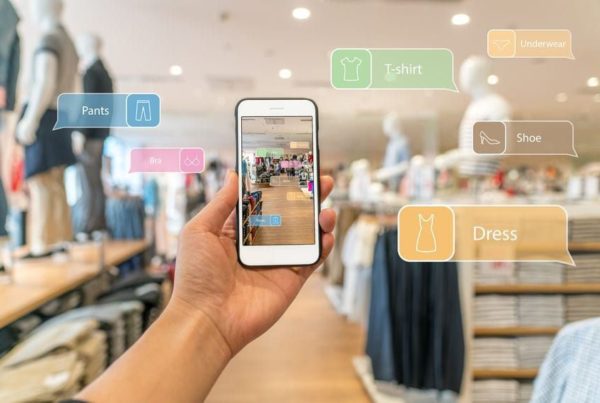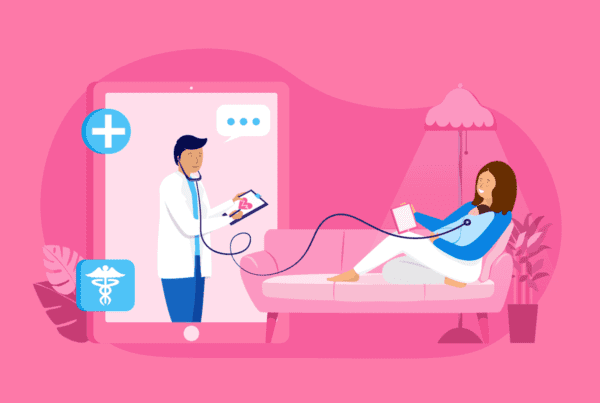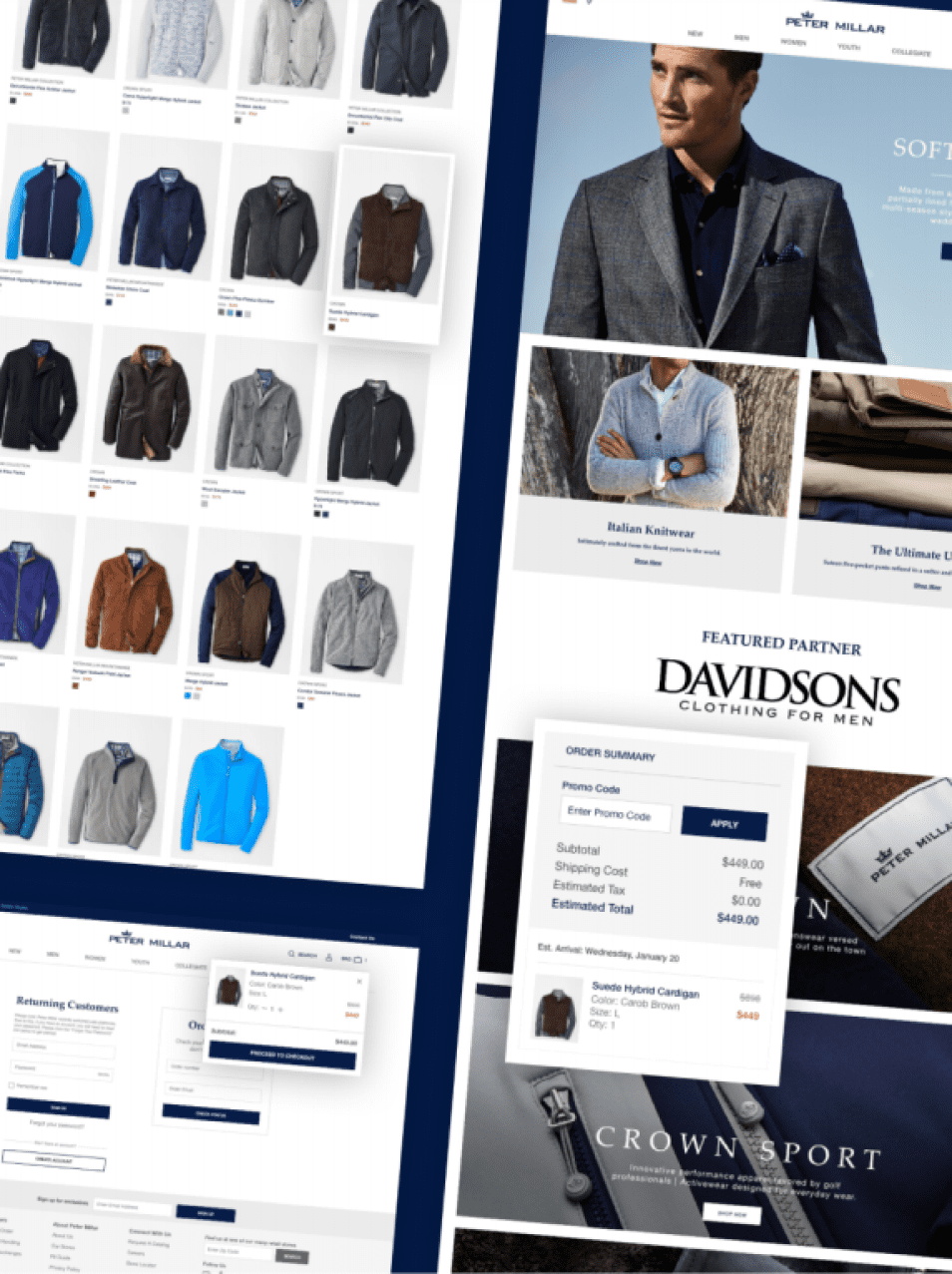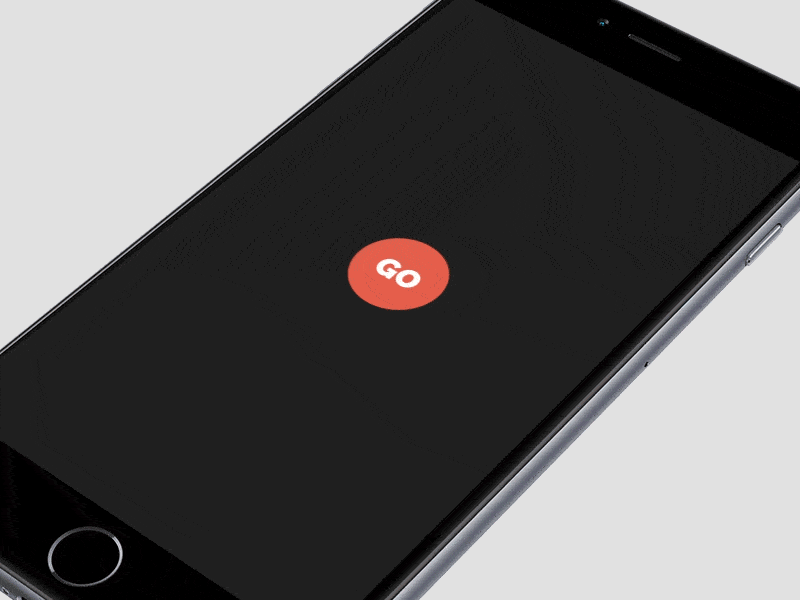
Digital customer experience is a part of end-to-end customer experience (CX) that is, basically, the whole spectrum of experiences a customer receives while interacting with a certain brand. It covers all touchpoints in the virtual world. In other words, digital CX includes not only browsing company’s website but also using a mobile app to buy a product or find a store (restaurant, hotel etc.) nearby, interacting with a brand on social media and so on.
The reason why nowadays digital customer experience requires more attention than ever before is that technologies are irrevocably changing the way people buy products. According to Statista, 1.66 billion people purchased goods on the Internet in 2017 and the global online sales was about $ 4.48 trillion. At the same time, as much as 51 percent of customers will never return to a brand after just one-time poor customer experience, according to the research by NewVoiceMedia.
The above numbers speak for themselves and leave no space for doubts. In today’s digitalized world, optimization of digital customer experience should become the main focus of any company’s marketing efforts.
So, how you can become better at digital? Let’s start by looking at some important stages of building digital strategy for CX optimization.
How to architect for digital experience optimization at scale

The recent Walker’s study shows that, by 2020, the quality of experience will become a key brand differentiating factor, overcoming even a price and a product itself. Hence, to stay competitive, companies must apply a customer-centric approach and develop a consistent long-term digital strategy around it.
Doesn’t sound easy to you? It’s indeed a challenging task, but please don’t freak out. Here are the steps to follow in order to architect digital experience optimization at scale:
1. Get to know your customers
You’ve probably already defined your target audience and even collected some essential information about people buying your products or services. But when it comes to improving the digital experience, having general data like their sex and age is just not enough.
To meet (or in the best-case scenario, exceed) your customers’ expectations, you have to understand how they behave and what triggers their actions at each touchpoint. This may be achieved by gathering customers’ feedback and implementing tech solutions that provide real-time updates about customer journey. Fortunately, artificial intelligence technologies create limitless possibilities for the collection and analysis of valuable information about customers.
2. Test changes impacting customers’ decisions
Detailed information about your customers will, of course, give you lots of insights about needs, pain points and expectations of your customers. Yet, no matter how much data you have, you just cannot predict everything.
What call-to-action sounds more encouraging? Are the steps of a checkout process clear enough? Is it a green or a red ‘Subscribe’ button that will allow you to collect more email addresses? You have to perform some experimentations to answer these questions. That’s why go for A/B testing before making decisions that may affect digital customer experience.
You may also want to conduct a design audit to figure out what design elements need improvements. We have a separate article covering this topic, you can read it here.
3. Start using data analytics
After reading the previous paragraph, you probably wonder: how to know what exactly to test? In today’s fast-paced world, companies usually implement a lot of changes and it’s just impossible to check all of them. This is where measurement and analysis get on stage. They will help you determine touchpoints to focus on, as well as interpret the results properly. Because what’s the point of performing any testing if you’re not able to act on the gained insights?
Inappropriate implementation of the changes may lead to even bigger losses. At the same time, advanced data analytics will allow you to mitigate this risk and get the most out of the results you’ll receive upon testing.
4. Rinse and repeat
It’s important to remember that optimization of customer digital experience is a continuous and iterative process. New technologies are emerging all the time and there is always a risk that either your existing competitor or a new player on the market will do something that will disrupt the environment your business operates in (think, for instance, about taxi services and Uber). That’s why never stop exploring customers’ behaviors. Also, make your digital strategy flexible enough so it can be adapted to the new conditions if needed.
Trends and techniques in digital CX optimization

Customer satisfaction inevitably leads to the increase of company’s revenues, conversion rate and loyalty to a brand. But what exactly can you do to improve digital customer experience? Well, there is, unfortunately, no single ‘magic formula’ that will work for all cases. Yet, there are proven techniques for digital CX optimization that have already become trends and that will most likely be useful for any business. Let’s discuss the most effective of them.
Take an omni-channel approach
As mentioned, digital experience is not limited to customers’ interactions with your website. Nowadays, when people are obsessed with social media, it’s important to create a brand’s digital presence across different channels. But just be there is not enough — customer experience should be unified meaning that your customers should receive the same feeling about your brand regardless of a channel they chose to interacted with.
Success story: Papa John’s
Website and social media are great channels to exploit, but what about TV? When Papa John’s noticed that a large part of pizza orders come from people watching TV shows, they decided to create an easy-to-use app for Apple TV. With it, people don’t even need to use their smartphones to order a pizza! The ability to deliver an outstanding customer experience through all digital channels (desktops, mobile and TV app) helps Papa John’s stay ahead of the competition.

Go mobile
There are 3.7 billion mobile users worldwide and smartphones accounted for almost 50 percent of web page views as of the beginning of 2017. And it’s no wonder since people tend to spend more time (especially, if we speak about free time) using their mobile devices than desktops or laptops. So responsive design is a must-have for any website. On top of this, to receive a growing number of customers and make their experience really delightful, consider building a mobile app that will help them search for products and make quick purchases on the go.
Success story: Ikea
What’s the hardest thing when choosing furniture? If your answer is ‘To find something that fits perfectly your room’, you’re right. To resolve this challenge and improve customer experience, Ikea developed Ikea Place App. Thanks to the augmented reality technology, the app allows buyers to place true-to-scale 3D items in their homes with the help of a smartphone’s camera. Impressive, isn’t it?

Be available
People appreciate the opportunity to receive help when they need it. The study shows that the majority of customers prefers a chat over phone calls. So implementing the former in your website is a great way to generate more leads, increase reachability and prove that you really care for your customers.
Success story: SnapEngage
Can one feel more helpless than when searching for the important information and ending up on 404 page? SnapEngage wanted to reduce the disappointment from such a bad experience and created a chatbot. The chat invitation pops up when visitors land on 404 page, so they can be quickly guided to the content they were looking for.

Make it personal
Personalization is a new black. According to The 2017 State of Personalization Report, 49 percent of buyers purchased a product that they didn’t plan to purchase after receiving a personal recommendation. But personalization is not only about making each customer feel special, it’s more about convenience, respect and saving time. When you know the preferences of your customers, you may provide them with more targeted content and offers. As a result, they spend less time looking for something they need. And the investments in solutions that make customers’ life easier always pay off with the increased satisfaction and loyalty to a brand.
Success story: Starbucks
Scrolling through the whole menu every time you want to order your favorite coffee is exhausting, isn’t it? Starbucks decided to implement smart personalization in its app for online ordering. The technology analyzes customer’s order history and patterns, so coffee-lovers have an opportunity to pick from the list of items they previously ordered rather than the full menu. The feature might seem insignificant but it does make a difference.

The above list is, of course, not exhaustive. Depending on the specifics of your business, you may find a myriad of other ways to optimize digital customer experience. But whatever you decide to do, just remember that all customers want (and deserve) a simple and pleasant experience. Your task is to find the ways to make it happen.
Conclusion
Nowadays, customers are more demanding and their expectations are higher than ever before. Gone are the days when having a mere website was enough to engage buyers. In today’s digitalized world, this task is more challenging. You have to develop a good digital strategy, work across several channels, make customer experience equally pleasant for computer and mobile users, and invest in solutions that will allow you to make the experience as personal as possible. Yet, if done right, all your efforts will bring great results, loyal audience and much higher profits.














